Sindhi weddings are a reflection of what truly means ‘living life, king size’ or a big fat Indian wedding! Filled with grandeur, opulence and everything extravagant, Sindhi weddings are a treat to witness. With fun celebrations that kickstart a week earlier to the D-day, Sindhi weddings are full of immensely sweet and exciting rituals along with a copious amount of drinks and dancing. So, if you have a Sindhi friend, make sure you get invited – by hook or by crook!
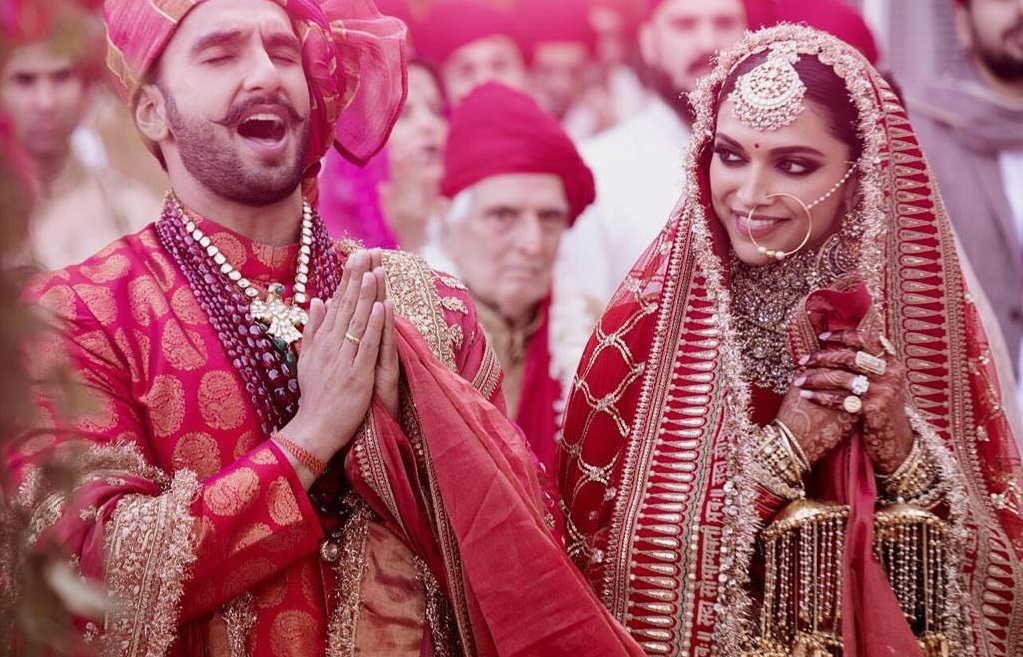
Here’s Everything You Need To Know About Sindhi Wedding Rituals & Customs:
Kachhi Misri & Pakki Misri
More like what is popularly known as a ‘roka’, Kacchi Misri is the marking of the first meeting between the bride and groom’s families after their match is fixed. It is an informal engagement where the bride’s family gifts sweets, clothes, coconut, fruits, and lumps of misri (sugar crystals) to solemnise the match and for good luck. Most importantly, the mother of the bride prepares the auspicious ‘Kada Prasad’ and sends it to the groom’s family in a silver dish.
After Kachhi Misri, comes the Pakki Misri which marks the formal engagement of the couple. This ceremony includes the groom’s family visiting the bride’s family with gifts and sweets known as the Shagun. The mother of the groom gives a Misri-filled earthen pot to the mother of the bride which she has to open in front of the groom’s family. Further, joined by seven married women, Lord Ganesha is drawn on the pot and the families seek blessings. The prayers are conducted by a priest after which the couple exchanges engagement rings. After this, the priest announces the perfect date and time for the wedding in the presence of both the families.
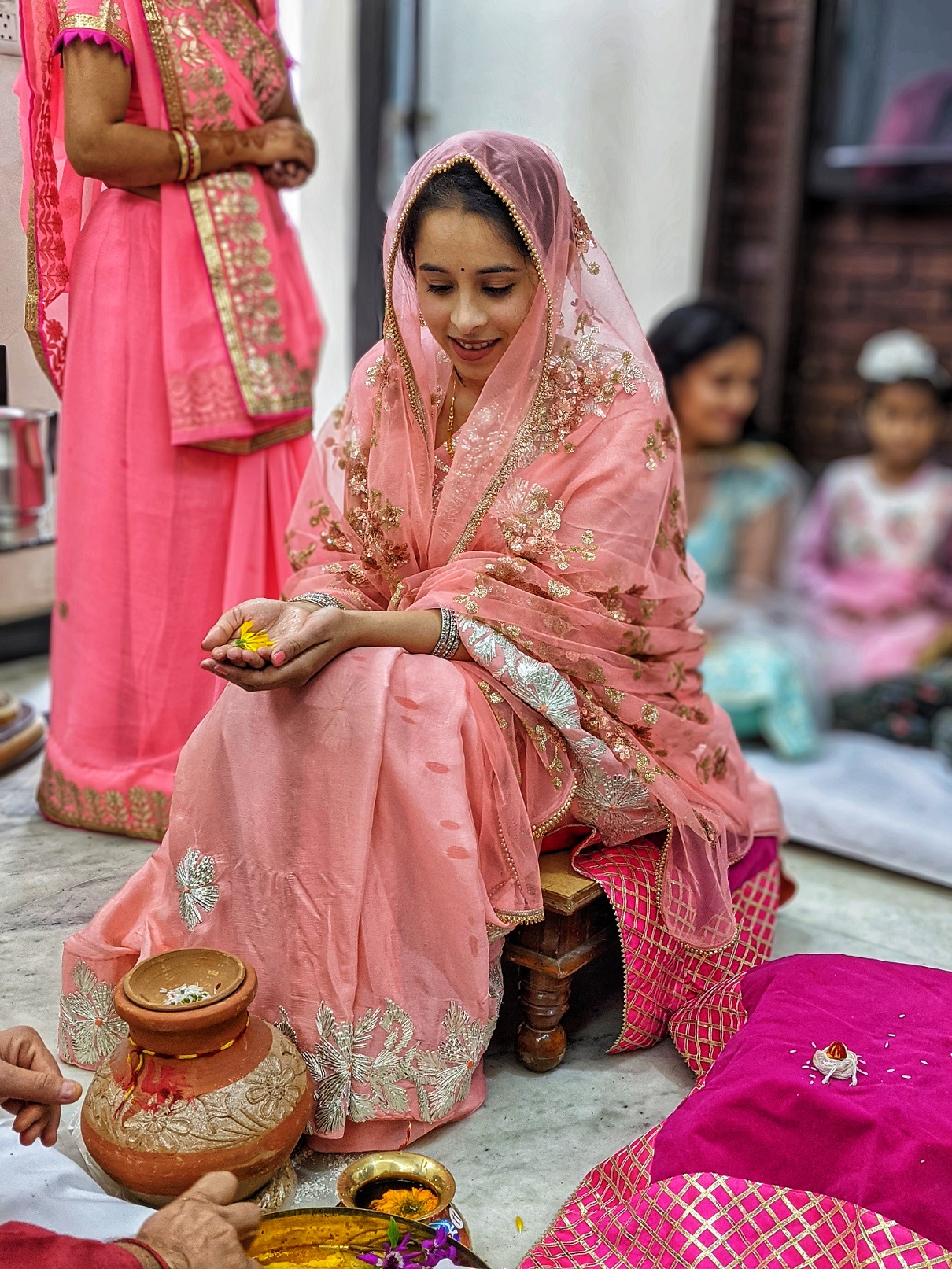
Berana Satsang
Berana Satsang is a prayer ceremony traditionally held by the groom’s family where everyone prays to Jhulelal to bless the couple. Everyone prays that all the wedding functions that are to be held go on smoothly and are filled only with happiness. Sindhi Ladas (traditional wedding songs) are also sung along with devotional Jhulelal songs.
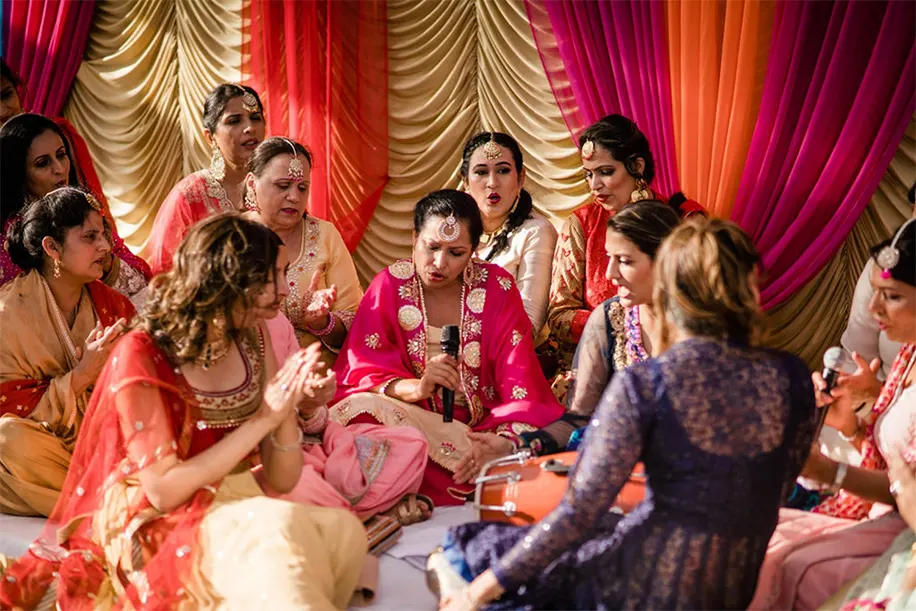
Dev Bithana, Navgrahi Pooja & Ghari Pooja
Dev bithana or Ganesh Stapana is a Sindhi ritual that embarks the beginning of wedding festivities. A stone grinder is installed at both the bride and groom’s homes as a Ganesha idol by the priest.
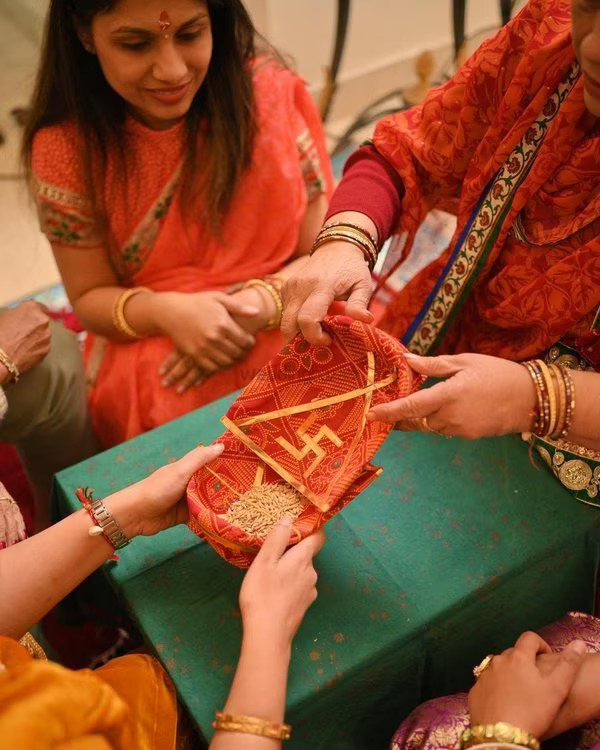
The Navgrahi Pooja is held on the wedding day in the morning or the night before. It is where the nine planets are worshipped along with the Hindu Gods. The Gods are welcomed to both the homes, the bride’s and the grooms as guests and are offered light, water and food. This pooja is done to pray to them so that all the obstacles are removed from the path of the couple and that the wedding happens smoothly without any issues.
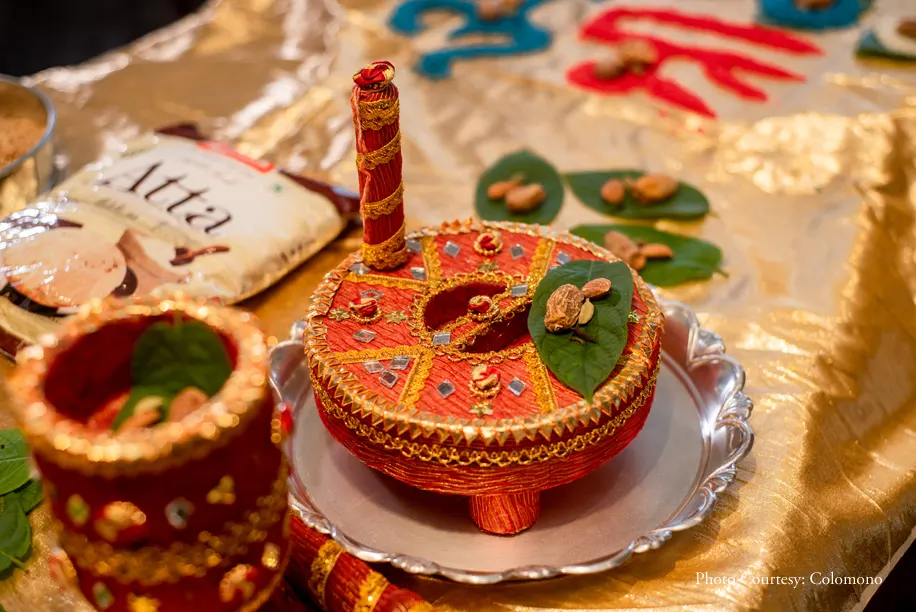
Next, the Ghari Pooja is performed at both the bride and the groom’s homes. It is a lengthy ceremony in which the priest hands wheat to seven married women who ground it in flour which is symbolic of flourishing prosperity. Next, an earthen lamp is smashed by the bride and the groom at their respective homes using their feet.
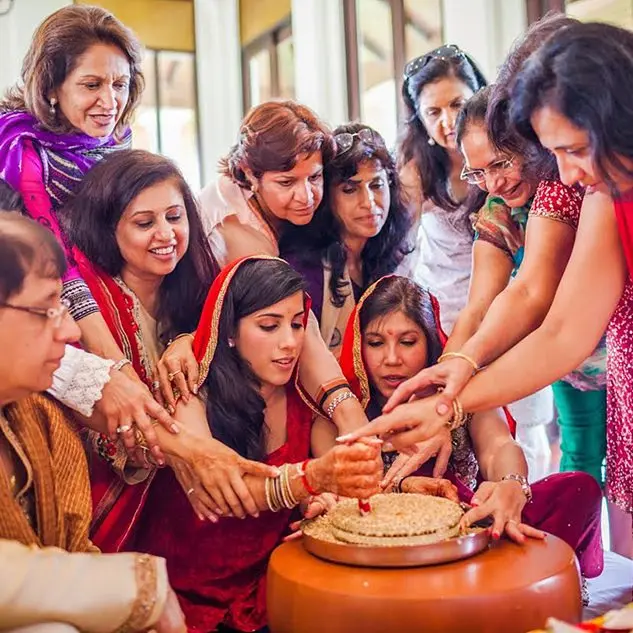
Janeu Or Jenya
Upanayana or thread ceremony is a sacred ritual performed at the groom’s house. It celebrates the groom’s transition from a boy to a man. A sacred prayer is offered along with a traditional yajna ritual, and a sanctified thread is offered to the groom to wear around his body by the priest, this holy thread is Janeu or Jenya. The priest whispers a prayer in the ears of the groom which the groom has to chant daily.
Sagri
Sagri is a formal introduction for both the families. The bride is introduced to each of her to-be in-laws and is given gifts from the newly introduced family members. She is also showered with flower petals by the groom’s relatives. The groom’s sister dresses the bride with beautiful jewellery made with flowers.
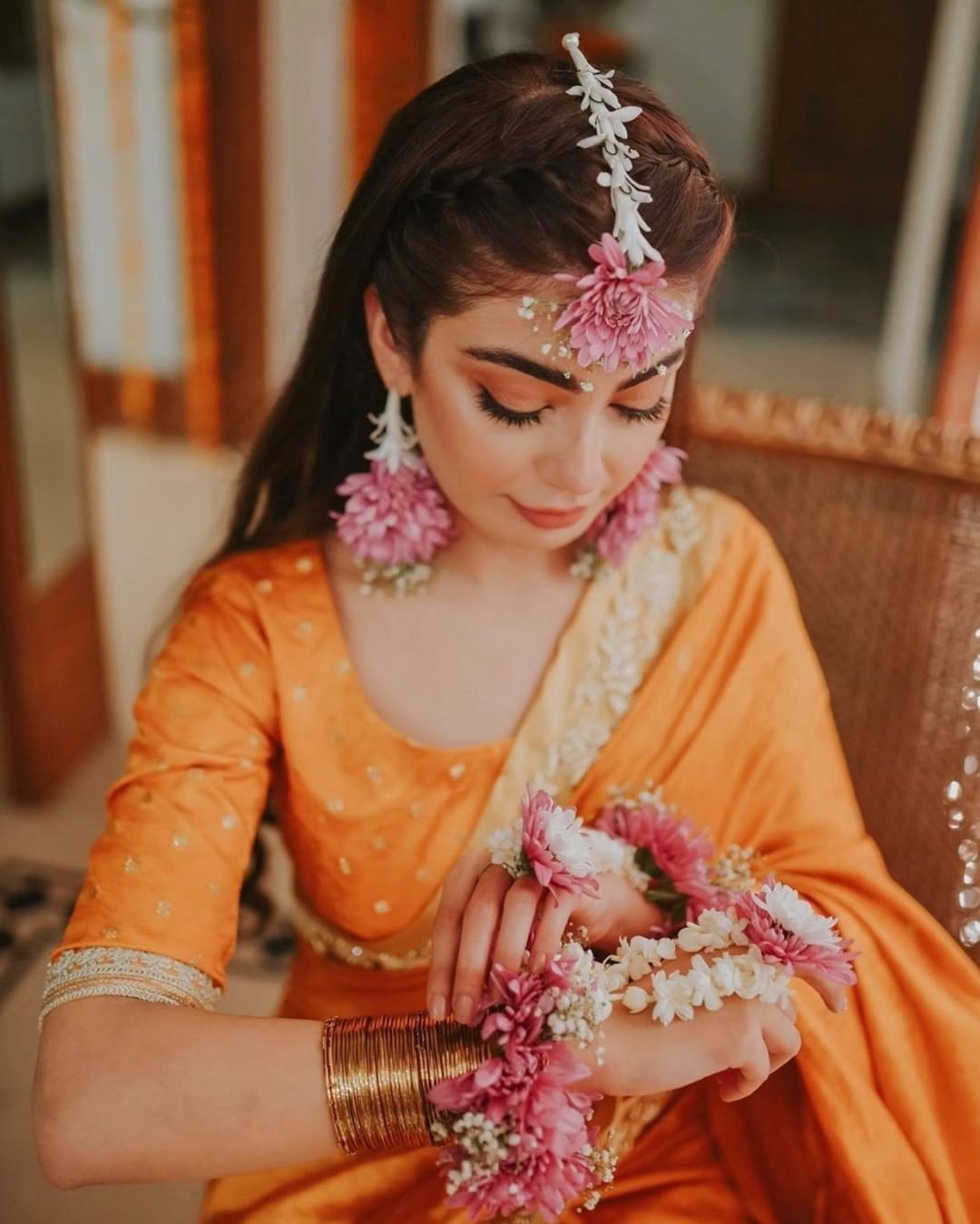
Mehendi
Mehendi is just like any other ritual followed in other traditional weddings. Applying mehendi to the bride and the groom is associated with good luck and prosperity.
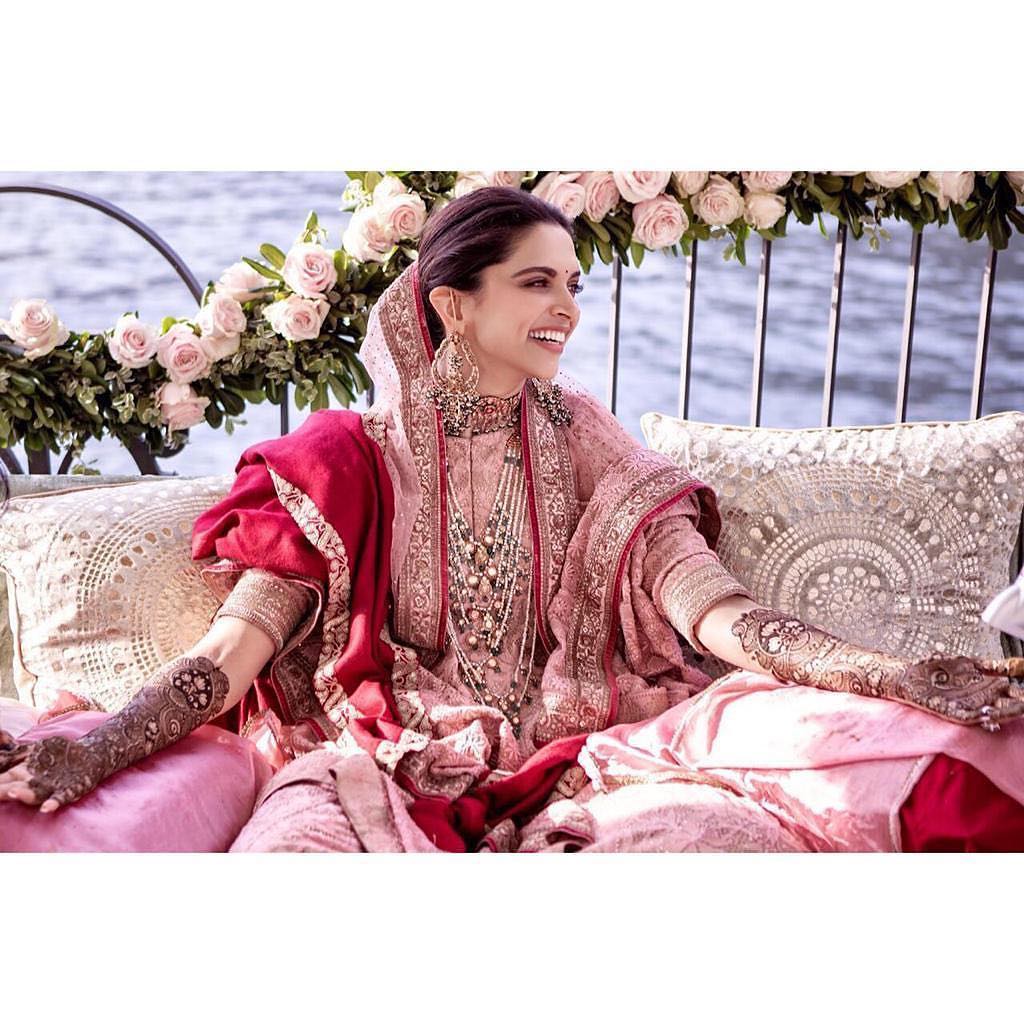
Also, here ‘s all that you need to know about Marathi wedding rituals & celebrations.
Head Bukki & Saanth
Head Bukki is pretty much like the Haldi ceremony and is performed at the bride’s house. Seven married women from the bride’s family apply oil to the bride’s hair and put haldi all over her face and body. This is done to give the bride a glow before the wedding.
Whereas, for the groom, head bukki is followed by a unique ritual called Saanth. After being doused with oil by the married ladies, the groom’s clothes are torn away by his family to symbolize him leaving behind his single life to get married.
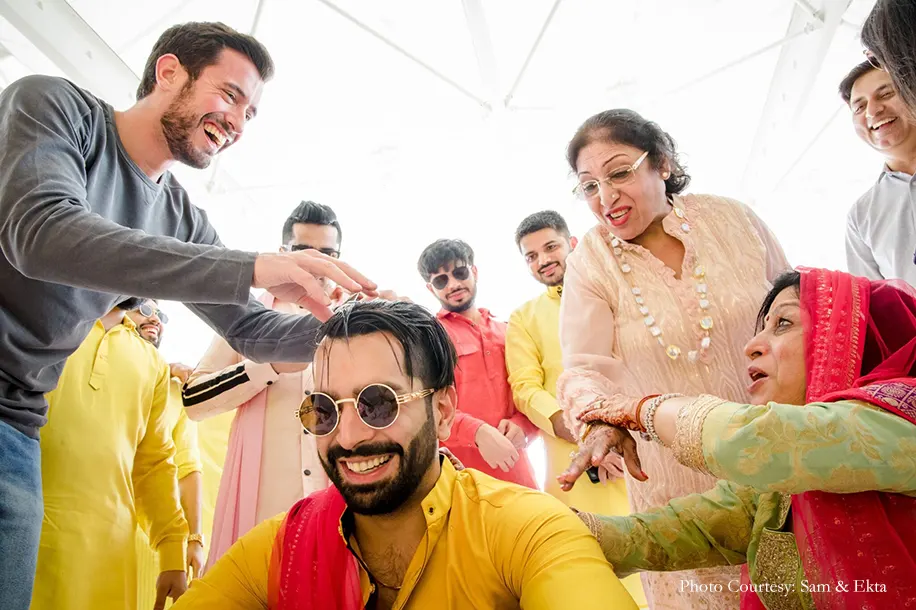
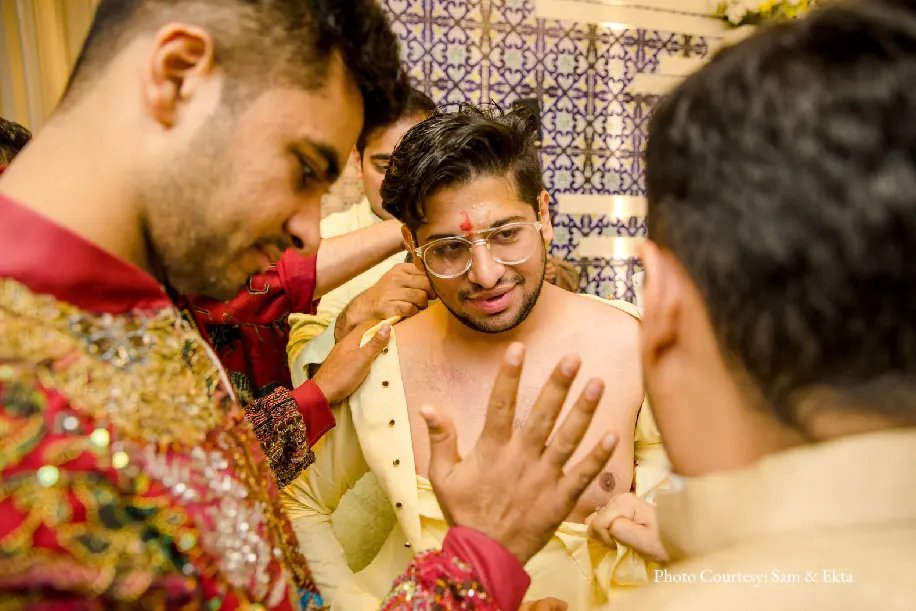
Gaaro Dhago
Gaaro Dhago is a pooja on the morning of the wedding where the priest offers prayers to the ancestors of both sides. A red thread is sanctified during this pooja and is tied around the wrists of both the bride and the groom.
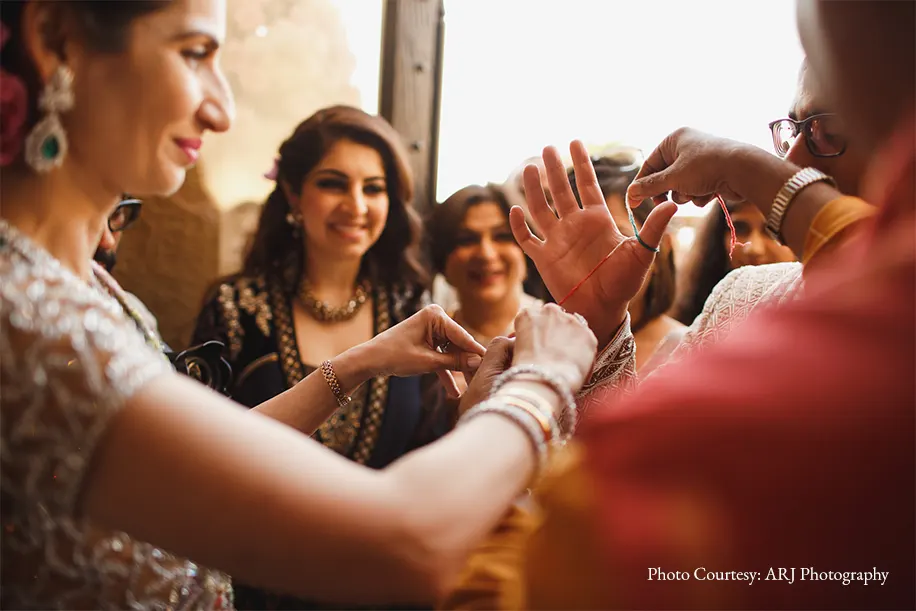
Baraat Swagat
Baraat is the ceremony where the groom and his family arrive at the wedding venue dancing, singing, and merry-making in a fun procession. The baraat is welcomed by the bride’s mother by performing a traditional aarti and tilak. His family is sprinkled with rose water and offered sugar and cardamom.
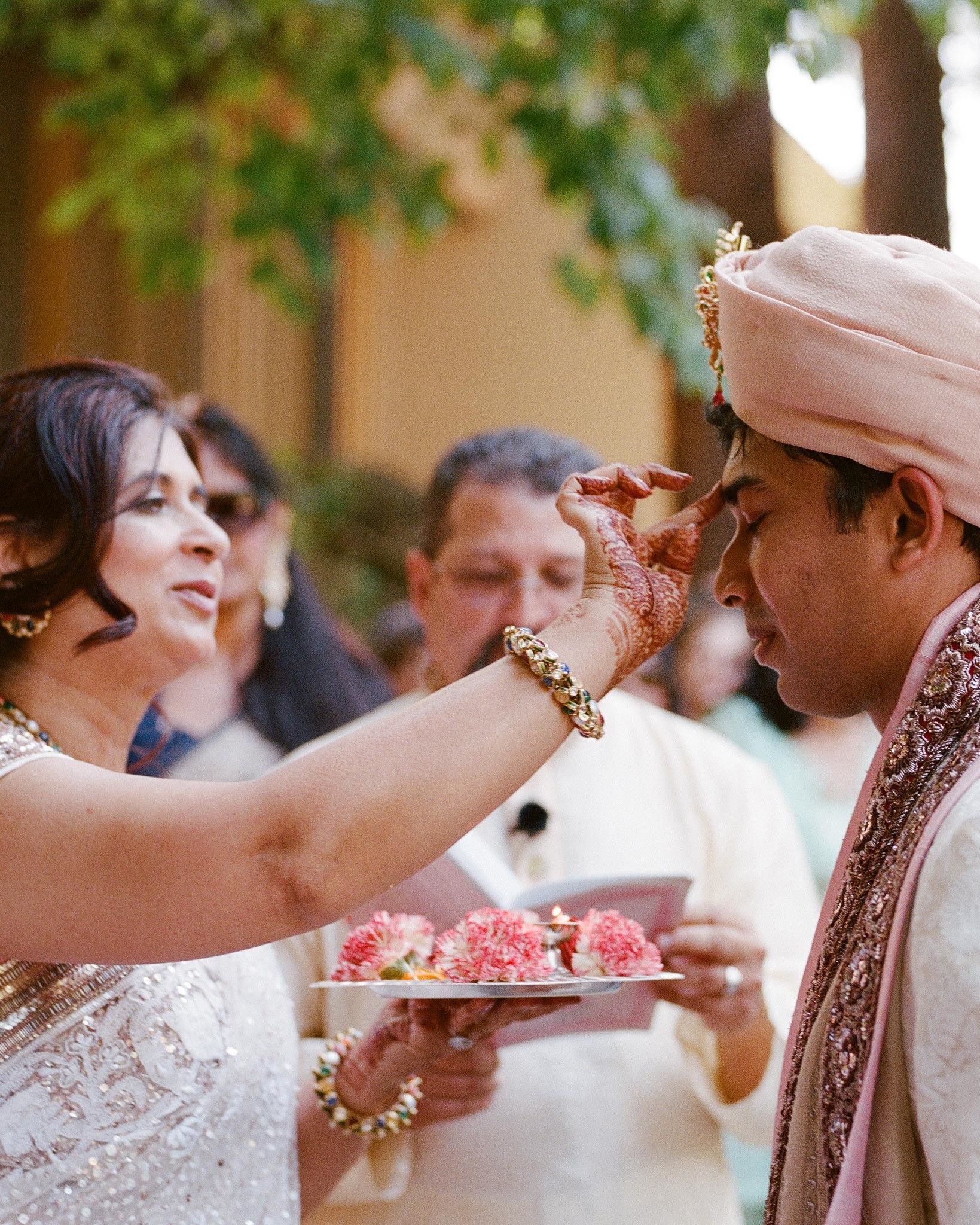
A big dupatta or sheet is used to separate the groom and bride to block their view of each other as the bride walks on to the mandap. A customary pooja is performed, after which the sheet is lowered and the couple finally gets a glimpse of each other.
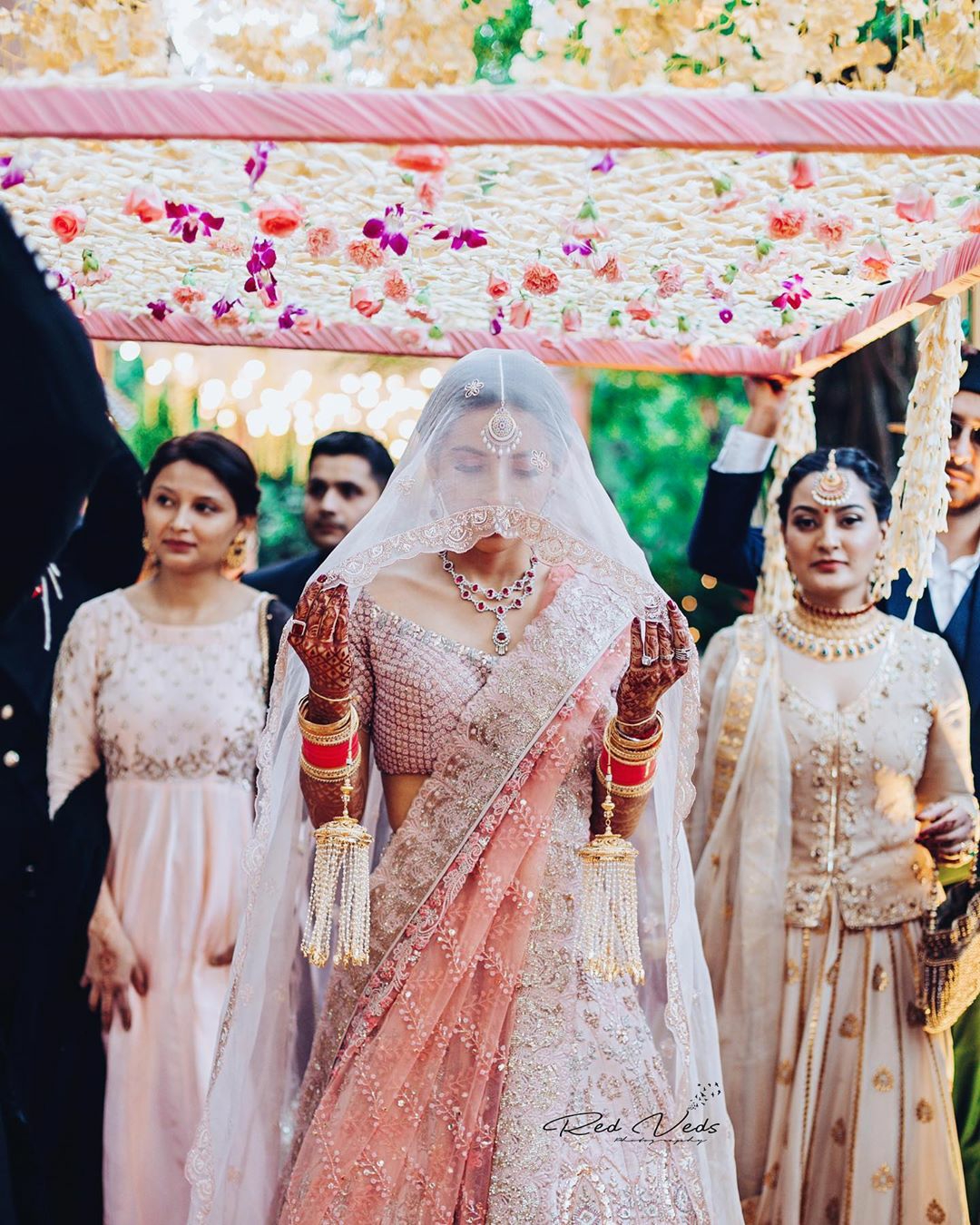
Jaimala
The Jaimala ceremony is done right after the bridal entry. The bride and groom exchange beautiful garlands of flowers called Jaimala three times.
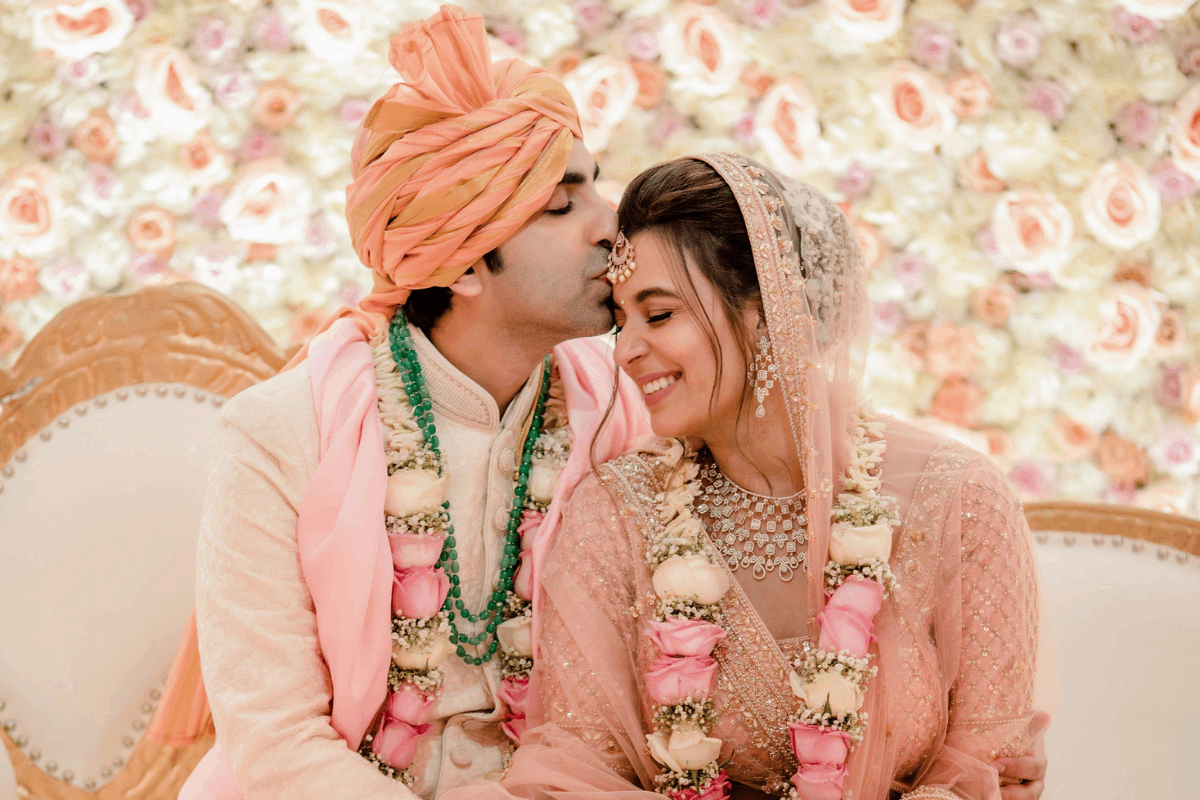
Here’s everything you need to know about Marwari wedding rituals.
Pao Dhulai
Once the bride and the groom are seated at the Mandap, the bride’s parents wash the groom’s feet using milk and water. This ceremony is done to portray that their son-in-law is an embodiment of Lord Vishnu.
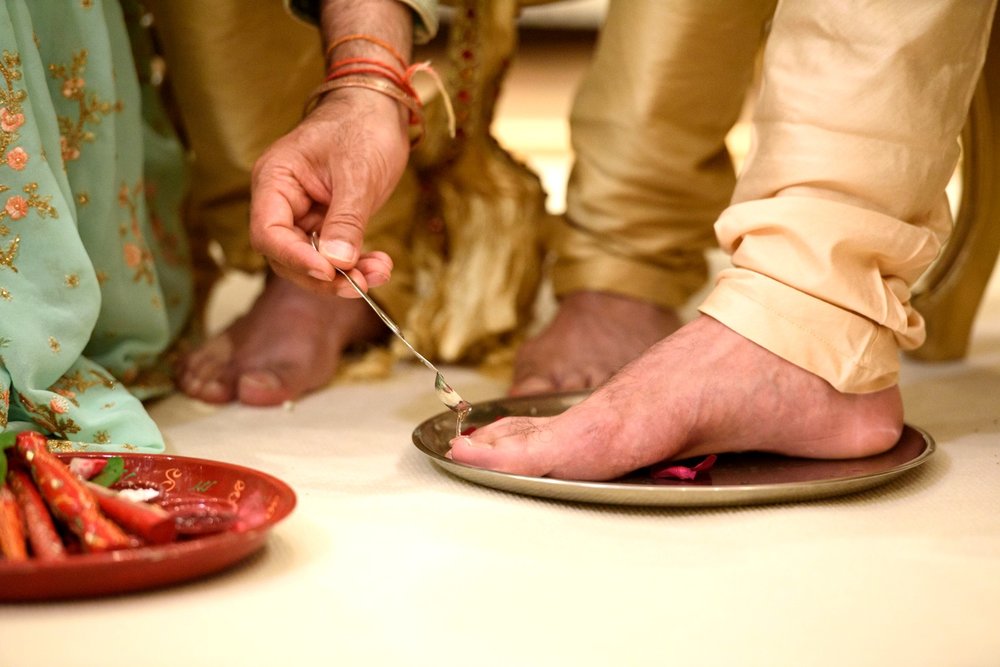
Palli Pallo & Hathiola
Palli Pallo is a ceremony where the bride’s dupatta is tied with the groom’s dupatta by his sister. She makes two knots connecting the dupattas while tying a few grains of rice within the knots. Hathiyala or Hathiola is a heart-warming Sindhi wedding tradition in which the bride’s right hand is tied to the groom’s right hand gently using a red cloth as they offer their prayers to the Gods together.
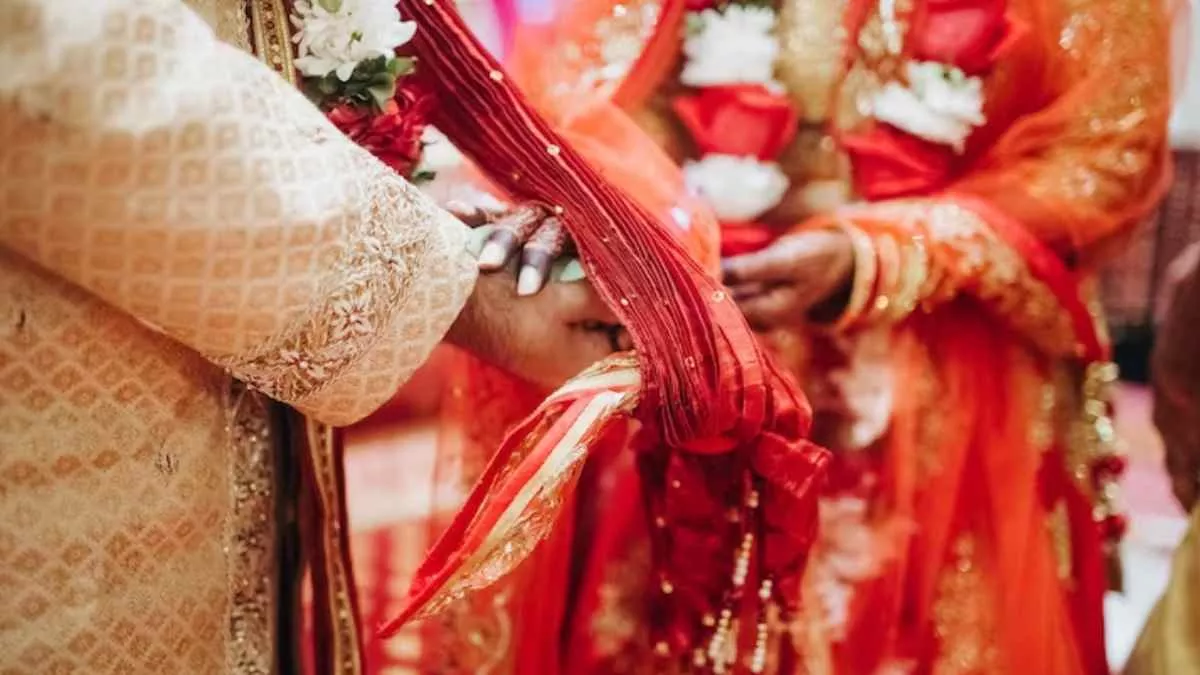
This ritual is symbolic of the blessed union of the couple. The couple then walk around the holy fire four times as the priest recites Vedic chants. The groom leads for the first three, while the bride leads for the fourth. The four circles signify the four pillars of human life that are dharma, artha, kama, moksha. With this ritual, the couple is bound together in love and matrimony for the rest of their lives.
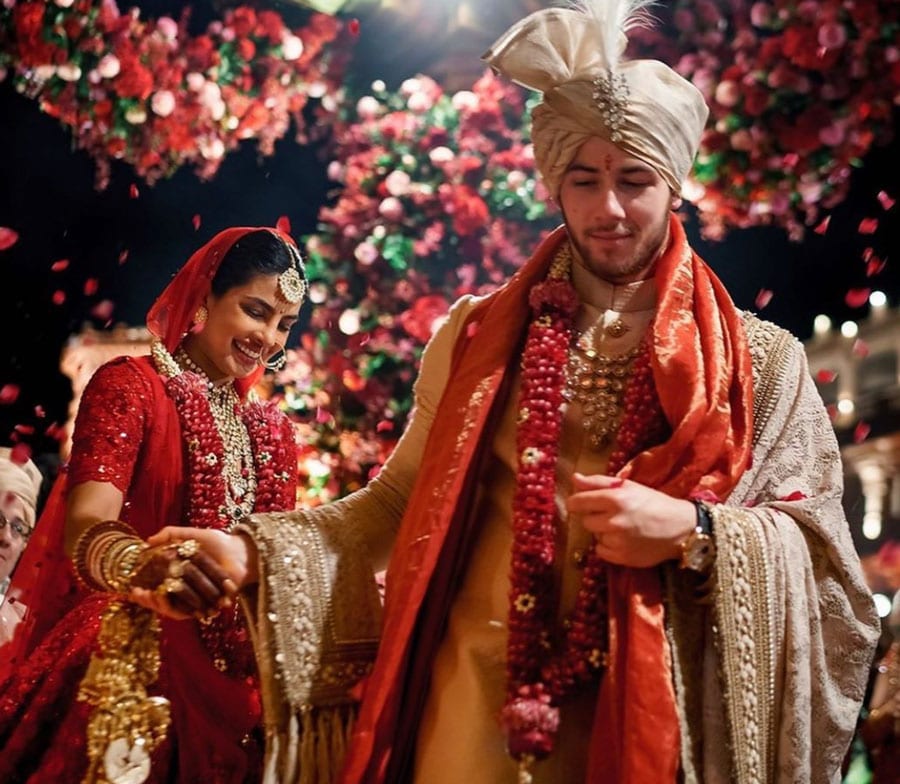
Here is the significance and meaning of phere during Hindu marriages.
Kanyadaan
Kanyadaan is a common ritual across other traditions too. It is the ‘giving away ceremony’, wherein the father of the bride officially gives his daughter to the groom, asking him to love, respect and care for her for the rest of their lives.
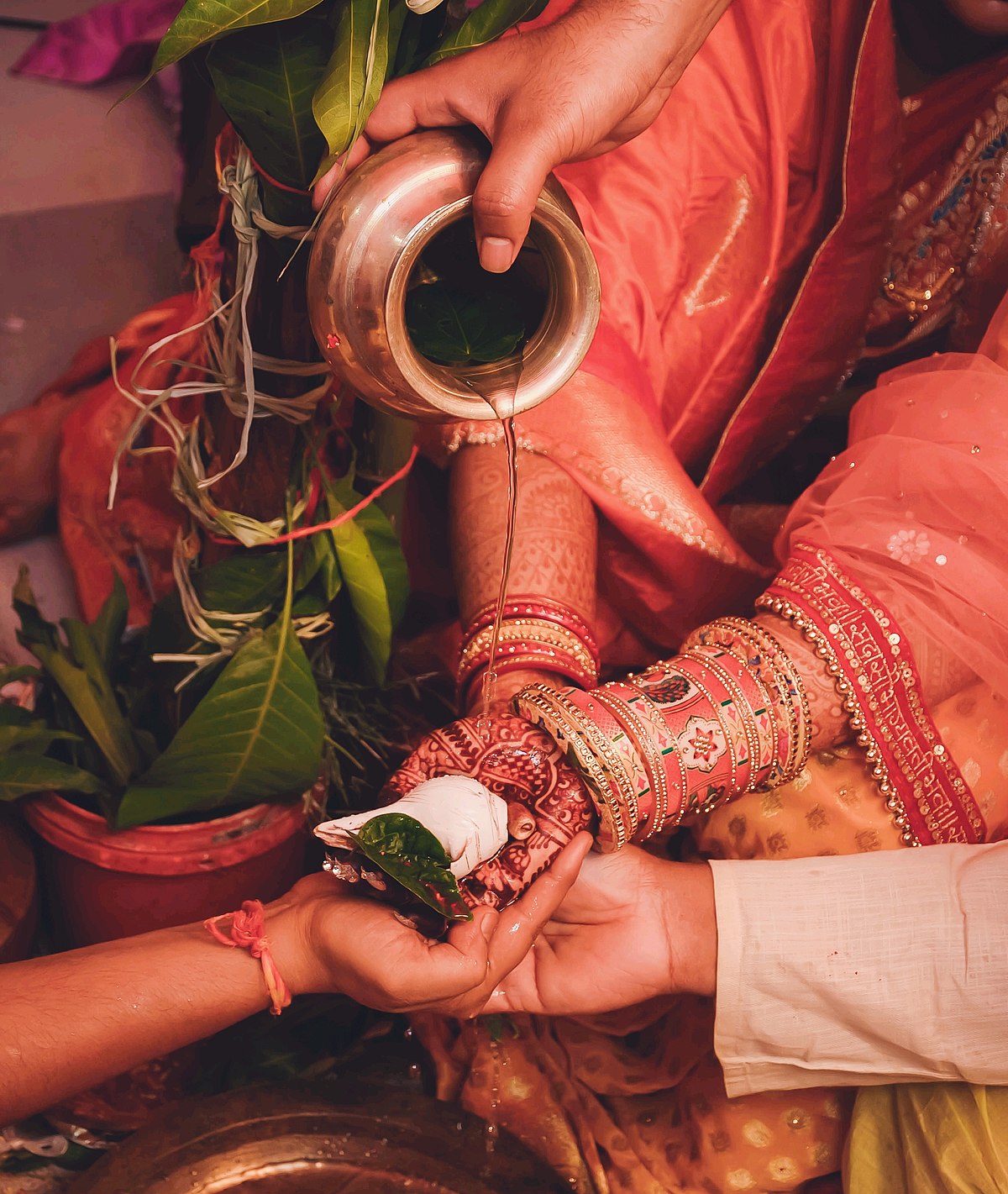
Saptapadi
The Sindhi wedding ritual of Saptapadi is all about togetherness and strength. The bride is asked to take seven steps, stepping over seven small piles of rice that symbolize the hardships that the couple might face in life. In this process, the groom holds the bride and helps her signifying that they will stay together through thick and thin while overcoming every hurdle.
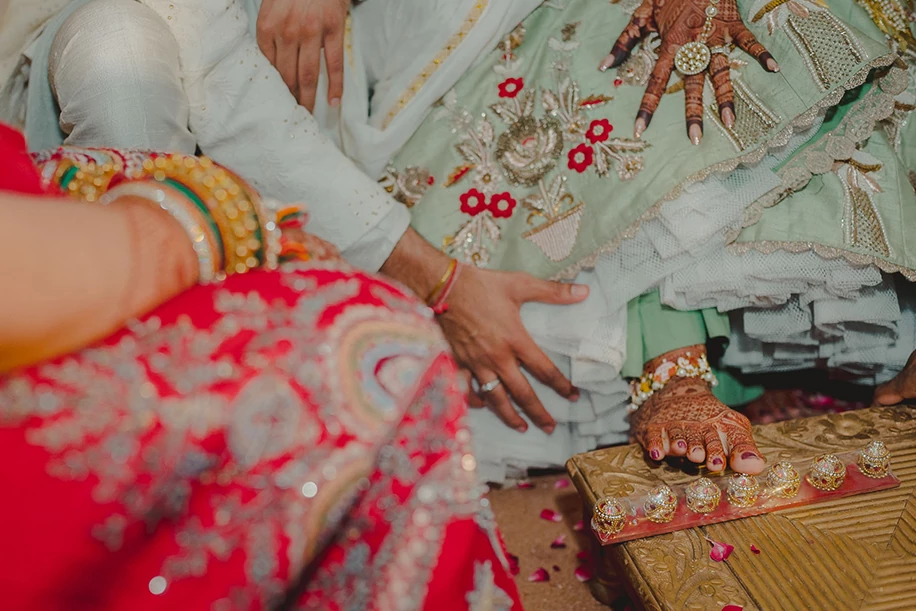
Vidai
This Sindhi wedding tradition is quite an emotional one as the bride leaves her parent’s house after the wedding and moves to her husband’s house. She is given parting gifts by her father before leaving with her husband for her new home.
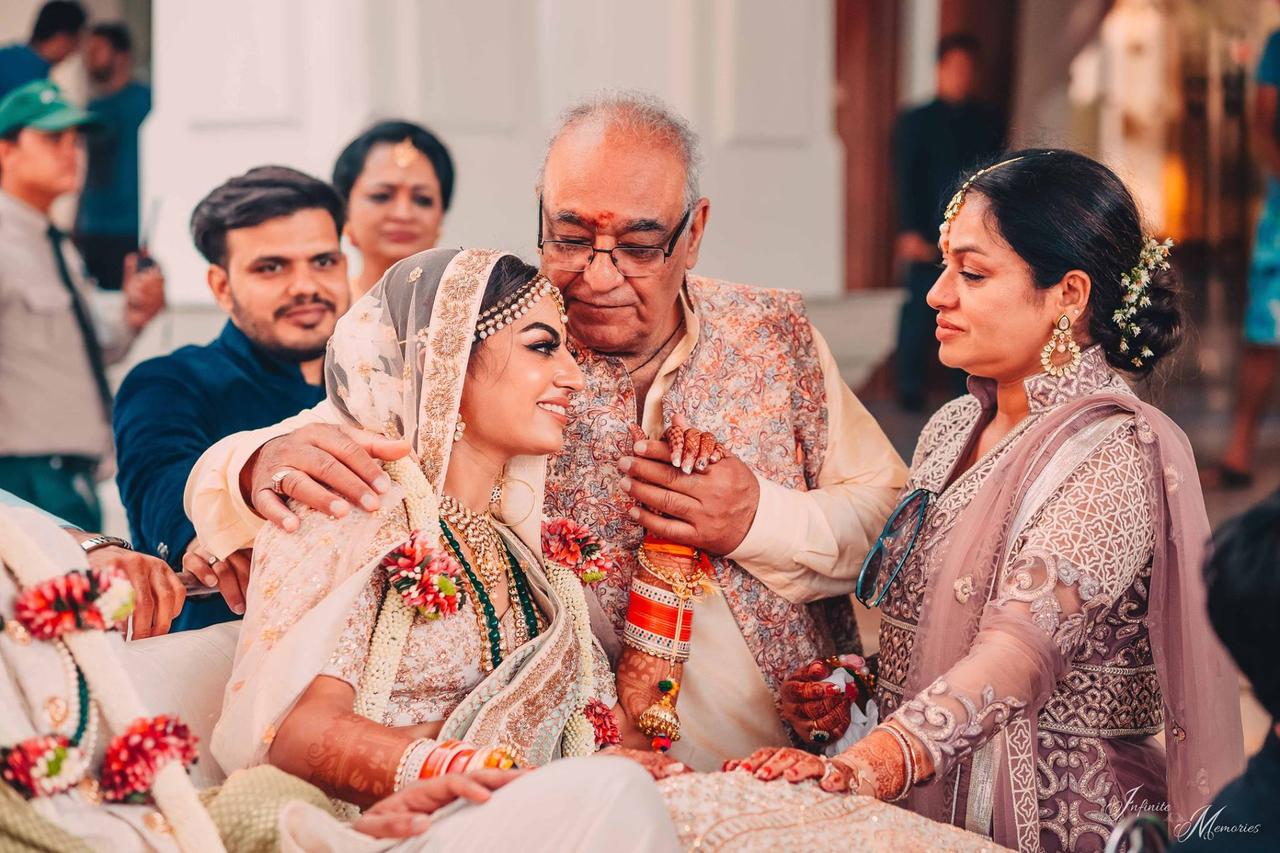
Also, here’s all you need to know about the Hindu wedding rituals and customs.
Datar
Datar is the Sindhi wedding ritual where the bride is received with a heartfelt welcome by her in-laws in her new home. The groom’s family gives the bride a warm welcome and they wash her feet with water and milk. She is then given some milk to sprinkle all over the house.
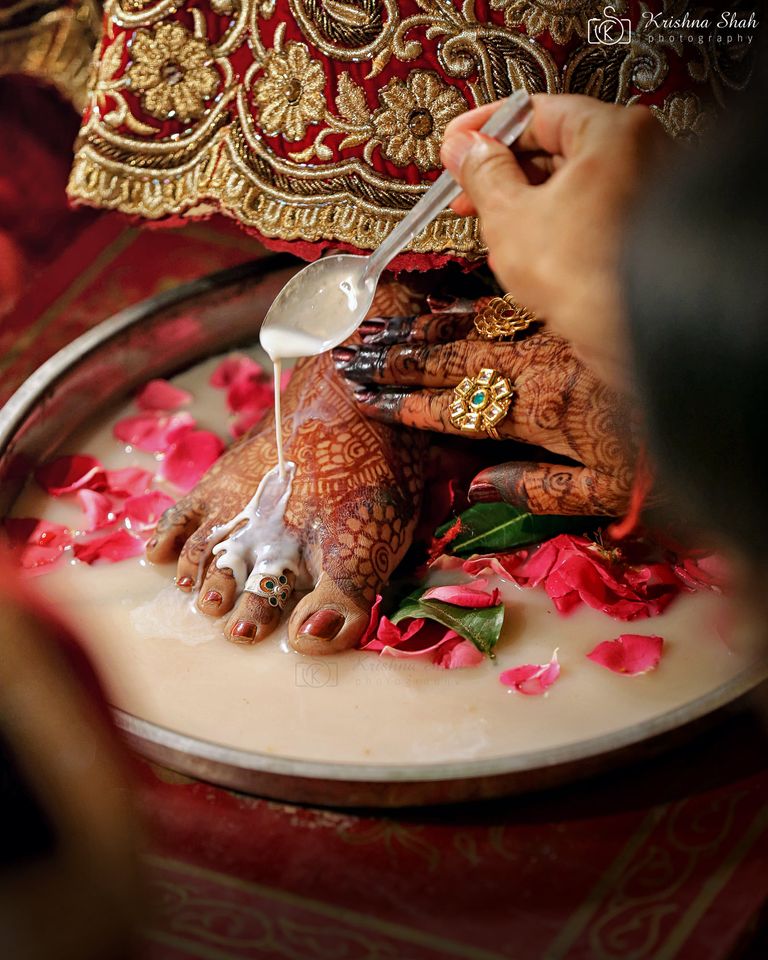
Salt Shagun
Salt Shagun is a Sindhi wedding ritual where the bride places some salt in the groom’s hands and he is supposed to give it back to her hands without spilling any. This process is repeated three times.
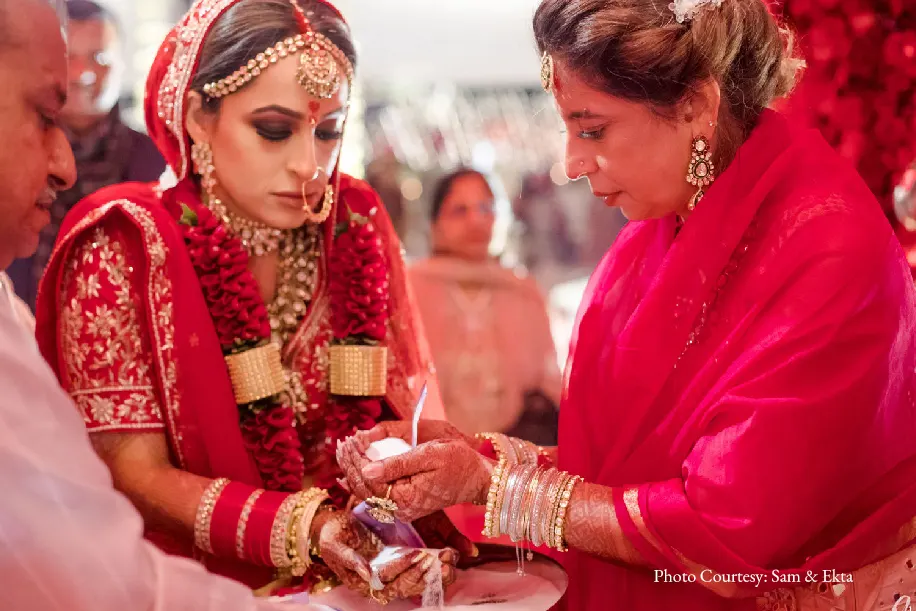
Chhanar
Chhanar ceremony is performed by the priest on the following day. He removes the stone grinder idol that he had installed before the wedding after which the groom’s mother feeds the couple seven bites of milk, rice and sugar.
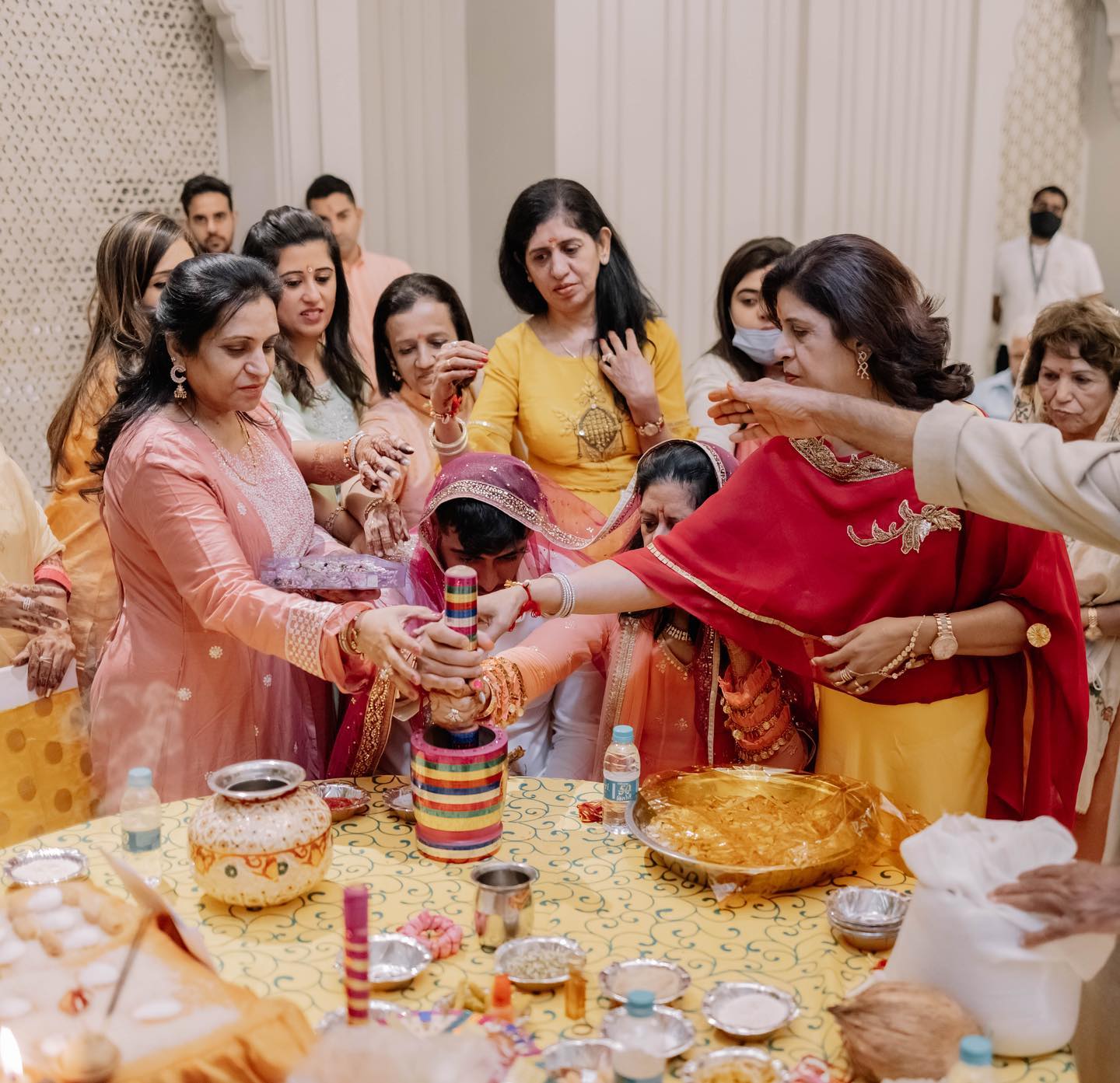
Satawarah
The Satawarah is a lavish affair in which the bride, the groom and his family members go to the bride’s family for lunch or dinner. The time for the Satawarah is auspicious and decided by a priest.
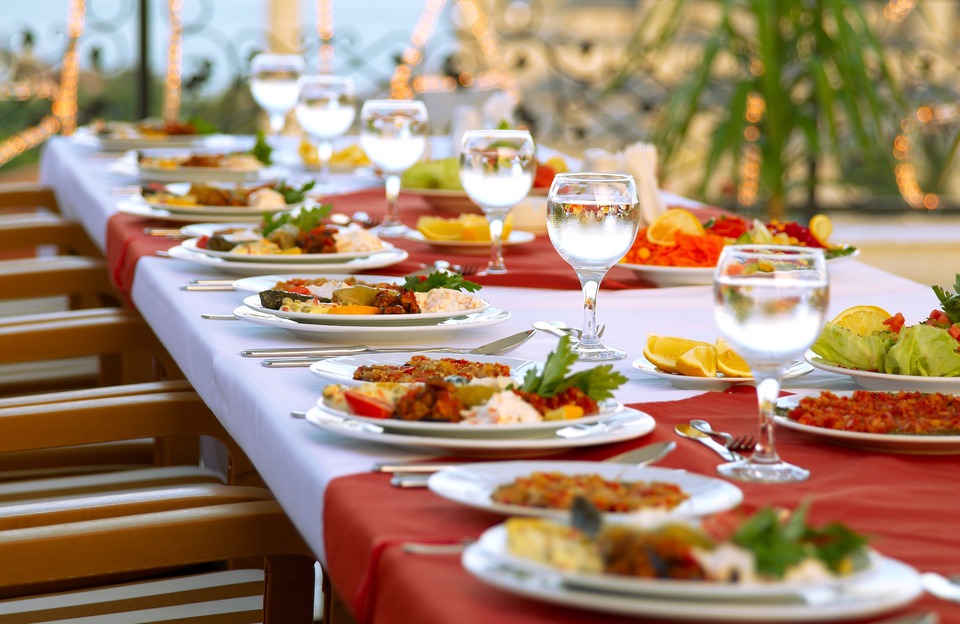
Gadjani
Gadjani or reception in generic terms, is hosted by the groom’s family to express their happiness about the wedding. It is a celebration full of delicious Sindhi food and lots of singing, dancing, and drinking.
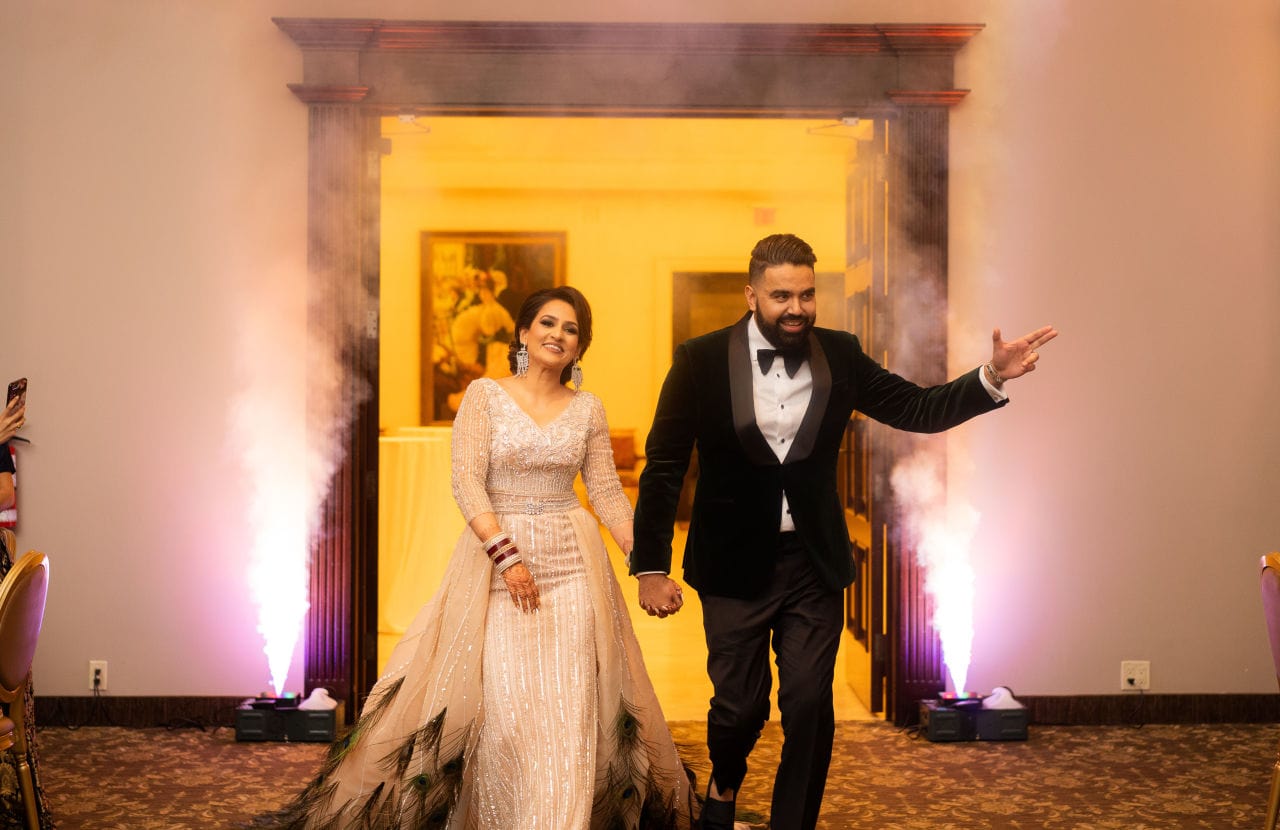
Here are some thoughtful wedding traditions from the west to include in your wedding.
PS, end your search for the best wedding planners approved by ShaadiWish.





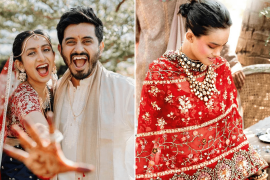







Comments are closed.